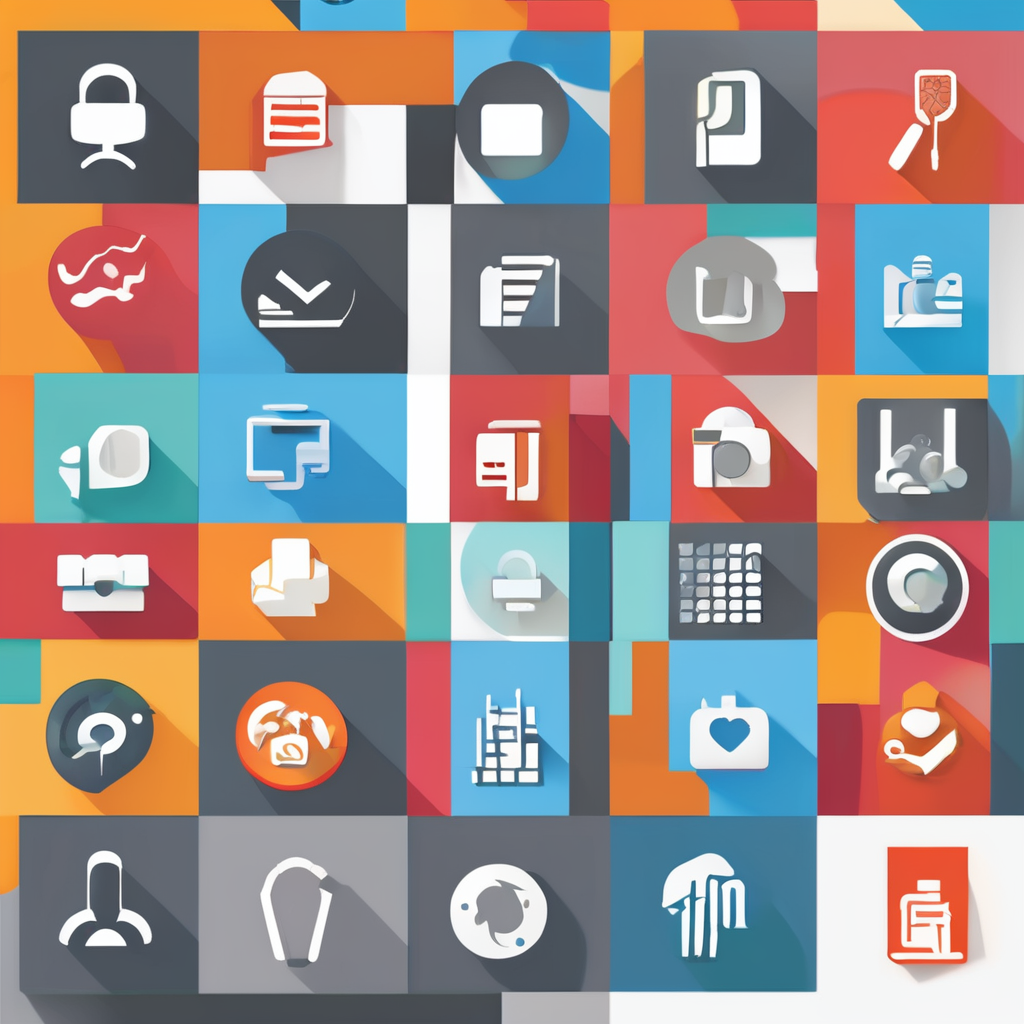Overview of Smart Nutrient Tracking Systems
Smart nutrient tracking systems are transforming nutritional management by leveraging technology to support healthier eating habits. These innovative tools, often integrated within smart refrigerators, allow users to keep a meticulous track of their diet. By using a smart nutrient tracker, individuals can monitor their intake and make informed dietary decisions.
The integration of diet technology into everyday appliances, like fridges, is reshaping how we approach food management. Fridges equipped with nutrient tracking features can identify the nutritional content of stored foods, providing users with real-time data to improve their dietary choices. This technology not only aids in maintaining a balanced diet but also enhances the overall kitchen experience.
Topic to read : Optimize Freshness, Cut Waste: Top Bread Storage Hacks for Small Kitchens
One of the pivotal elements of these systems is the role of data analytics. By analysing consumption patterns, smart nutrient trackers offer personalized nutrition recommendations tailored to individual dietary needs and goals. These insights help users not only to stay on track with their objectives but also to adjust their nutritional intake dynamically.
In summary, smart nutrient tracking systems represent a significant leap forward in dietary management, encapsulating technology’s potential to make eating healthier, more efficient, and tailored to personal needs.
Topic to read : Transform Your Kitchen: Unveil the Benefits of a Space-Saving Foldable Step Stool for Ultimate Efficiency
Features of the Ultimate Smart Nutrient Tracker
In the ever-evolving world of diet technology, the smart nutrient tracker stands out with its versatile nutrient tracking features. These devices have revolutionized the approach to nutrition management by providing real-time insights into dietary habits. A smart fridge equipped with a nutrient tracker not only identifies the nutritional content of items but also offers recommendations tailored to individual needs.
Key functionalities include:
- User-friendly interface that ensures accessibility across various demographics. Whether tech-savvy or not, users can easily navigate and obtain essential dietary data.
- Seamless integration with other smart home appliances, enhancing synergy in smart homes. This connectivity facilitates efficient sharing of data across devices, providing a holistic view of one’s dietary habits.
The accessibility extends beyond just design, offering multilingual support and personalization options for dietary preferences. This adaptability reinforces the tool’s relevance across diverse populations. The capabilities of a smart fridge are not just about effective storage. They serve as proactive partners in meal planning, helping users meet their dietary goals through seamless interaction.
Smart nutrient trackers elevate the home appliance from a traditional kitchen fixture to an intelligent hub for health management, encouraging smarter, healthier eating habits.
Benefits of Sustainability in Dietary Habits
Incorporating sustainable eating practices has become increasingly important to consumers focused on health and the environment. Utilizing smart technology in this endeavour significantly benefits both personal well-being and ecological balance. By enabling users to track consumption through nutrient tracking systems, food waste is substantially reduced. These systems ensure efficient tracking of perishables, minimizing spoilage and unnecessary waste.
The long-term advantages of adopting eco-friendly nutrition are compelling. For instance, cutting down on meat consumption not only conserves resources but improves heart health. Smart nutrient trackers assist in making sustainable swaps, offering data-driven suggestions for plant-based alternatives when meal planning.
By integrating nutrient tracking features, users gain better control over their dietary footprint. The real-time insights gathered from smart technologies encourage informed decision-making, which contributes positively to sustainable living.
Additionally, the environmental impact is lessened by promoting sustainable eating. With fewer food items being discarded, the overall carbon footprint diminishes, aligning with global sustainability goals. These holistic benefits demonstrate how embracing eco-friendly nutrition supports both personal health advancements and broader ecological preservation. Smart tracking initiatives empower individuals to maintain habits that nurture themselves and the planet.
Comparative Analysis of Smart Nutrient Trackers
In the rapidly expanding arena of nutritional tracking systems, a product comparison is essential for discerning the optimal choices. Various smart nutrient trackers offer distinct features tailored to meal planning solutions and streamlined healthy eating.
Leading options boast unique functionalities ranging from comprehensive nutrient databases to interactive meal suggestions. However, pros and cons must be weighed carefully. For instance, some models provide robust food recognition algorithms, ensuring precise nutrient calculations. Others might excel with their intuitive user interface but lag in integration capabilities with other smart home devices.
User feedback is crucial in a market review. Many users appreciate systems with efficient nutrient breakdowns and seamless connectivity to smartphones for real-time tracking. Conversely, others report challenges with overly complex initial setups or inconsistent updates.
To guide your purchasing decisions, evaluate your needs: Do you prioritize an advanced nutrient breakdown, or is ease of use more imperative? Comparing leading models based on system reviews can illuminate the best match for personal dietary goals. Engaging with real-world insights ensures informed decisions, leading to more effective and enjoyable nutrition management at home.
Practical Applications of Smart Nutrient Tracking in Meal Planning
The adoption of smart nutrient tracking in meal planning has opened new avenues for healthier eating routines. Advanced meal planning solutions utilise data-generated insights from smart fridges to enhance the nutritional value of everyday meals. These smart fridge applications bring efficiency and precision to both selecting and preparing meals.
One practical application involves leveraging nutritional data for adapting recipes. By accessing comprehensive nutrient databases, users can tailor meals to meet specific dietary requirements, ensuring a balanced diet. This application promotes healthy eating by providing real-time suggestions for nutrient-rich ingredients, potentially swapping out less healthy options.
Moreover, family involvement in meal planning is enhanced when smart nutrient trackers are integrated. Families can collectively decide menus based on shared dietary goals, fostering an environment that promotes healthier choices. Interactive features on some devices encourage participation from various family members, making it easier to stick to planned meals.
By employing these smart technologies, individuals gain comprehensive insights into their eating habits, facilitating informed nutritional choices. This integration not only personalises meal planning but also encourages sustainable practices, motivating families to optimise their health collectively while enjoying the process.
Tips for Maintaining a Lean Diet Using Smart Technology
In today’s technology-driven world, maintaining a lean diet has become more manageable with the advent of smart nutrient trackers. These tools empower users to strategize their meal planning with precision and ease. By setting clear dietary goals, users can utilise these trackers to monitor and adjust their nutritional intake effectively. This practice not only ensures adherence to a well-balanced diet but also facilitates informed decision-making.
One of the pivotal aspects of employing nutrition management is the ability to receive real-time notifications and reminders. These alerts help users manage food freshness, encouraging timely consumption and minimisation of waste. By tracking expiration dates and usage patterns, consumers are nudged toward healthier eating habits, directly supporting their dietary objectives.
To fully harness the benefits of smart technology, it is essential to integrate these devices into your daily routine. Establishing dietary targets through advanced meal planning tools ensures a comprehensive overview of one’s nutritional intake. Incorporating these technologies leads to an improved understanding of food constituents, enhanced meal structuring, and optimized dietary management. Through these innovative solutions, individuals are well-equipped to maintain a lean diet, supporting long-term health and wellness.
User Guides for Smart Nutrient Tracker Implementation
Implementing a smart nutrient tracker into your kitchen involves a few straightforward steps to ensure technology integration runs smoothly. Begin by unboxing your device and reading the user guides thoroughly. They provide essential insights into setting up the nutrient tracker within your fridge setup. Typical steps include connecting the device to your home Wi-Fi, ensuring it communicates effectively with other smart appliances.
To optimize the smart fridge’s capabilities according to your dietary preferences, it’s crucial to calibrate the device by entering any specific dietary needs or restrictions. This allows the nutrient tracker to offer personalized recommendations effectively. Explore settings that let you set alerts for food preferences and monitor nutritional intake tailored to your health goals.
If you encounter any issues during installation, the user guides often offer troubleshooting steps. Common problems, like connectivity interruptions or incorrect data readings, are typically addressed here. Otherwise, reaching out to customer support ensures further assistance for persistent issues.
This setup not only leads to a well-adapted diet technology tool in your kitchen but also enhances overall meal management, potentially transforming how you engage with your daily nutrition.










